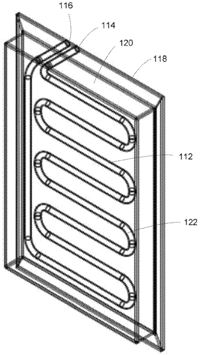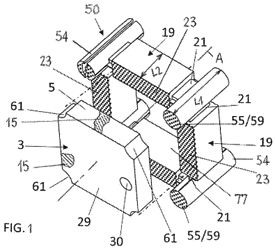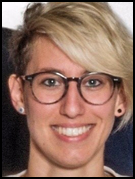 The Phase Change Matters e-mail newsletter is a weekly summary of the latest news and research on phase change materials and thermal energy storage. To subscribe, visit www.puretemp.com/subscribe. For more frequent updates, follow @puretemp on Twitter or visit the Phase Change Matters blog, www.puretemp.com/pcmatters.
The Phase Change Matters e-mail newsletter is a weekly summary of the latest news and research on phase change materials and thermal energy storage. To subscribe, visit www.puretemp.com/subscribe. For more frequent updates, follow @puretemp on Twitter or visit the Phase Change Matters blog, www.puretemp.com/pcmatters.
USDA seeks to add PCM as category in BioPreferred Program
The U.S. Department of Agriculture is proposing to add phase change material as a category of biobased products eligible for procurement preference by federal agencies and their contractors.
 Phase change material is not currently one of the 109 categories in the USDA’s BioPreferred Program. But biobased PCM products are still eligible to participate in the program if they become certified through a voluntary labeling initiative, explained Caroline Tapscott, BioPreferred Program scientist. Products made by three PCM manufacturers – Croda Inc., Phase Change Energy Solutions and PureTemp LLC – qualified for the BioPreferred catalog through that initiative.
Phase change material is not currently one of the 109 categories in the USDA’s BioPreferred Program. But biobased PCM products are still eligible to participate in the program if they become certified through a voluntary labeling initiative, explained Caroline Tapscott, BioPreferred Program scientist. Products made by three PCM manufacturers – Croda Inc., Phase Change Energy Solutions and PureTemp LLC – qualified for the BioPreferred catalog through that initiative.
The current minimum biobased content for products in such “certification-only” categories is 25 percent. The USDA is proposing to raise the minimum to 71 for phase change materials. All PCM products now listed in the catalog meet that threshold.
The BioPreferred Program was created by the Farm Security and Rural Investment Act of 2002 and expanded by the Food, Conservation, and Energy Act of 2008. The purpose is to increase the use of biobased products.
Under the program, federal agencies are required, with some exceptions, to purchase biobased products within designated product categories when the purchase price of the product exceeds $10,000 or when the quantity of such products or functionally equivalent products purchased over the preceding fiscal year equaled $10,000 or more.
In the document describing the proposed rule changes, the USDA says it “has been unable to obtain data on the amount of phase change materials purchased by federal procuring agencies” but “believes that some federal agencies and their contractors do and would likely purchase these types of products.”
The USDA is proposing to add 29 other biobased categories as well, including adhesives, concrete curing agents, exterior paints and facial care products. Public comments on the proposed rule changes will be accepted until Nov. 13, 2018.
PATENTS
PCM panel and charging unit for cooling a cabinet of a merchandiser
U.S. patent application 20180266739 (applicant The Coca-Cola Co., Atlanta, Georgia):
“A phase change material panel for cooling a cabinet of a merchandiser is disclosed. The panel may include a refrigerant tube, an outer jacket surrounding the refrigerant tube, and a phase change material positioned between the refrigerant tube and the outer jacket and in contact with the refrigerant tube. … The panel [shown at right] may be charged at or near the point-of-sale or remotely therefrom, such as at a warehouse, on a truck, at a distribution center, or the like and brought to the merchandiser.”
Body support cushion with multiple layers of phase change material
U.S. patent application 20180263377 (applicant Tempur-Pedic Management LLC, Lexington, Ky.):
“A body support cushion, e.g., mattress, has multiple foam layers, including a viscoelastic foam layer and a reticulated foam layer, and an outer cover. At least one of the foam layers and the outer cover each includes phase change material having latent heat properties that provide two intervals of dermal cooling.”
Articulated panel for thermal insulation
 U.S. patent application 20180266619 (applicant Hutchinson, Paris, France):
U.S. patent application 20180266619 (applicant Hutchinson, Paris, France):
“An assembly comprising a structure provided with an interior volume in which is present for example at least one fluid capable of circulating in said volume and under the action of circulation means. Thermally insulating elements of VIP construction are arranged around a layer containing a PCM and extending around the peripheral wall that surrounds the volume. Protrusions fixed to the peripheral wall delimited spaces in which the thermally insulating elements are positioned.”
IN BRIEF
• ARPA-E this week awarded $28 million to 10 R&D projects aimed at developing energy storage systems to power the electric grid for up to 100 hours, improving grid resilience and performance. Thermal energy storage projects were among the winners. The U.S. Department of Energy‘s National Renewable Energy Laboratory won a $2.79 million grant to “develop a high-temperature, low-cost thermal energy storage system using a high-performance heat exchanger and closed-loop Brayton cycle turbine to generate power.” Michigan State University won $2 million to “explore a process that heats a bed of magnesium manganese oxide to release oxygen, and then passes air over the particle bed to start a chemical reaction that releases the heat to drive a gas turbine generator,” Greentech Media reported.
• Mark Richards, applications engineering manager at Phase Change Energy Solutions, will give a presentation on “Testing and Modeling of Phase Change Materials for Building Applications” at next week’s Building Performance Analysis Conference and SimBuild in Chicago.
• Nominations for nine Scientific and Society Awards given by the American Oil Chemists’ Society are due Oct. 1. The awards recognize leaders in fats, oils, proteins and surfactants who have advanced the science and technology of their interest areas.
• The agenda has been posted for the CSP Madrid 2018 conference and exhibition, to be held Nov. 13-14. Topics include “Advancements in Thermal Storage Systems with Molten Salt” and “Thermal storage + PV, gas or other power generations.”
• Ember Technologies announced this week that its PCM-equipped coffee mug is now available at Bloomingdale’s.
• New from Decision Databases: “2018-2023 Global Temperature Controlled Packaging Solutions Market Report”
• Entropy Solutions has been granted a U.S. trademark for the tagline “Global Authority on Phase Change Material,” in use since 2014.
• How green is your lab? The EU Science Hub invites European Union residents to submit photos that show how to reduce waste, save energy, maximize equipment efficiency or anything else that makes a lab green. Science Hub will post submitted photos on its Facebook page. The entry deadline is Oct. 19. The winning photographer will receive a two-day trip to Berlin to visit the hub’s ARTEFACTS exhibition, where the winning photo will be displayed.
• Children curious about science will have a chance to chat with researchers, observe demonstrations and take part in hands-on experiments at the annual “Science is Wonder-ful!” event Sept. 25-26 in Brussels, Belgium. The event, sponsored by the European Commission and European Parliament, drew 4,600 participants in 2017.
• The United States has removed 142 chemical and plastic products, including paraffin wax, from the latest round of tariffs that it will impose on Chinese imports next week, the American Chemistry Council said Tuesday.
• The Thermal Energy Systems Lab at Nanyang Technological University in Singapore has an opening for a post-doctoral researcher to assist in the development of thermal energy storage material and systems. Contact Alessandro Romagnoli, a.romagnoli@ntu.edu.sg, for details. “We are looking for an expert on industrial energy efficiency with capabilities to run exergy/energy analysis, skills with flow diagrams (e.g. Sankey) and well grounded in current and future technology development,” Romagnoli said. “This is a short-term appointment (either full time or part-time).”
RESEARCH ROUNDUP
For our full list of recent academic research, see puretemp.com/academic. Here are highlights from the past week:
From Journal of Chemical Thermodynamics:• Heat capacities of potential organic phase change materials
From Renewable Energy:
• Effects of microencapsulated phase change materials on the performance of asphalt binders
• An improved, generalized effective thermal conductivity method for rapid design of high temperature shell-and-tube latent heat thermal energy storage systems
• Multi-objective optimisation of thermal energy storage using phase change materials for solar air systems
From Energy:
• A comprehensive study of properties of paraffin phase change materials for solar thermal energy storage and thermal management applications
• Evaluation of a novel solar driven sorption cooling/heating system integrated with PCM storage compartment
From Chemical Engineering Journal:
• Shape-stabilized phase change materials based on porous supports for thermal energy storage applications
• Novel smart textile with phase change materials encapsulated core-sheath structure fabricated by coaxial electrospinning
From International Journal of Heat and Mass Transfer:
• Experimental research on the effective heating strategies for a phase change material based power battery module
• Modeling hysteresis in the phase transition of industrial-grade solid/liquid PCM for thermal energy storages
From Applied Thermal Engineering:
• Determination of heat transfer coefficients in direct contact latent heat storage systems
From MATEC Web of Conferences:
• Thermal Properties of Concrete Incorporated with Shape-stable Phase Change Material [pdf]
From Advanced Powder Technology:
• Multi-walled carbon nanotube laden with D-Mannitol as phase change material: Characterization and experimental investigation
From Advances in Polymer Technology:
• The influence of emulsifiers on preparation and properties of microencapsules of melamine–urea–formaldehyde resins with n‐dodecanol as phase change material
From Materials:
• Macro-Encapsulation of Inorganic Phase-Change Materials (PCM) in Metal Capsules
NETWORKING
Connect with PCM experts and industry leaders on LinkedIn
 More than 1,350 people have joined a LinkedIn group devoted to the discussion of phase change material and thermal energy storage. The Phase Change Matters group is an interactive complement to the award-winning blog and newsletter of the same name.
More than 1,350 people have joined a LinkedIn group devoted to the discussion of phase change material and thermal energy storage. The Phase Change Matters group is an interactive complement to the award-winning blog and newsletter of the same name.
You are invited to join the group and connect with PCM and TES experts from around the world. This week we welcome Steve Power, entrepreneur at InnoCess, Munich, Germany; Babi Liyakat, Mechanical Engineering Sciences Laboratory, Mahesana, India; Barz Tilman, senior scientist at the Austrian Institute of Technology, Vienna, Austria; and Ilaria Mazzoleni, principal at IM Studio Milano/Los Angeles, Los Angeles, Calif. Rebecca Ravotti, who joined the group last week, writes:
 “Hello, everyone. [I have been] living and working in Switzerland since 2014, currently employed c/o University of Applied Sciences Hochschule Luzern HSLU in the Competence Centre for Thermal Energy Storage (CCTES). I have a solid background in chemistry and materials science, and I am working on a Swiss National Science Foundation (SNSF) funded project on the investigation of Esters as new bio-based PCM. One publication on the MDPI Applied Sciences journal has already resulted from this work, however further will follow. Two additional publications are expected by the end of the year.”
“Hello, everyone. [I have been] living and working in Switzerland since 2014, currently employed c/o University of Applied Sciences Hochschule Luzern HSLU in the Competence Centre for Thermal Energy Storage (CCTES). I have a solid background in chemistry and materials science, and I am working on a Swiss National Science Foundation (SNSF) funded project on the investigation of Esters as new bio-based PCM. One publication on the MDPI Applied Sciences journal has already resulted from this work, however further will follow. Two additional publications are expected by the end of the year.”